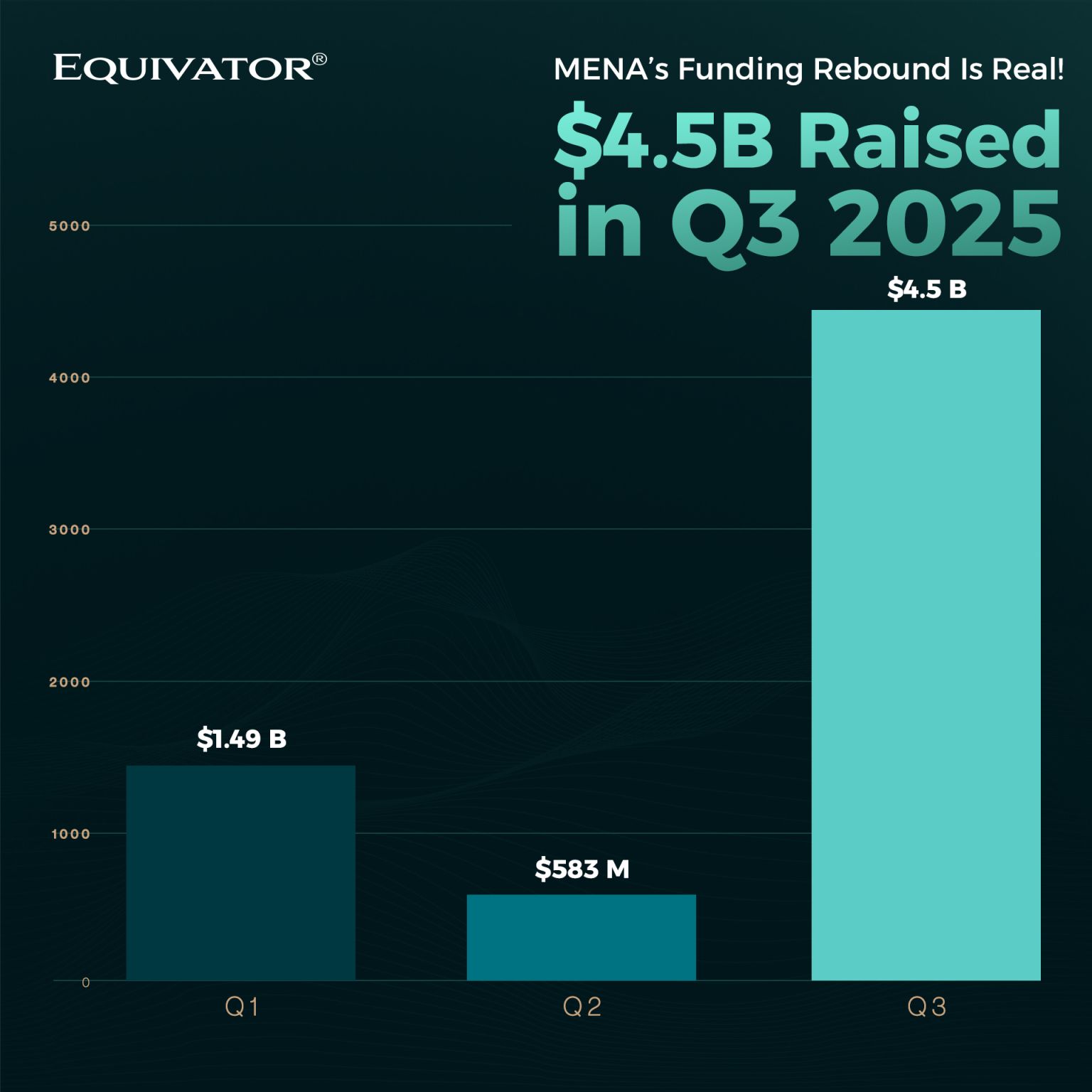.jpg)
The third quarter of 2025 marked a decisive turnaround for MENA’s venture ecosystem. Startups across the region secured $4.5 billion across 180 deals, reflecting a 914% month-on-month surge, the strongest rebound observed this year.

The resurgence was catalyzed by Money20/20 Middle East, the region’s flagship fintech event. It served as a powerful convening force for investors, spotlighting high-growth fintech ventures and triggering a wave of mega-deals, particularly in Saudi Arabia.
Saudi Arabia emerged as the quarter’s dominant player, accounting for $2.7 billion of total funding. This was primarily fueled by landmark transactions including Tamara’s $2.4 billion debt facility and HALA’s $157 million Series B.
The UAE maintained its consistent performance with $704 million across 26 rounds, reinforcing its reputation as the region’s most reliable funding hub. Meanwhile, Oman and Morocco made notable appearances on the funding map, signaling a gradual geographic diversification of the MENA startup ecosystem beyond its traditional power centers.
Fintech dominated the quarter with $2.8 billion in raised capital, underscoring investor confidence in financial innovation as a key driver of regional digital transformation. Proptech followed with $528 million, benefiting from rising demand for technology-driven real estate solutions amid broader infrastructure investments.
While early-stage startups led in deal count, 55 rounds raising $129.4 million, it was the late-stage rounds that defined the value narrative, with just four deals contributing $699 million. The data points to a two-speed market: one that continues nurturing new ventures while directing significant capital toward mature, scalable businesses with proven models.
Q3 2025 demonstrated that MENA’s venture landscape is not only recovering but evolving. Mega-deals have returned, investor confidence is rising, and new markets are stepping onto the stage. The challenge now lies in translating this surge into sustainable, region-wide growth, one driven by innovation depth rather than headline volume.